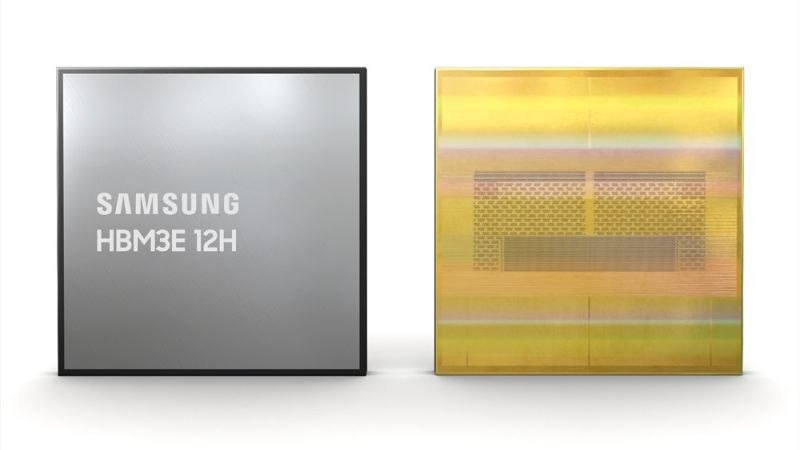Leading the global market as an overall memory supplier, South Korean Samsung Electronics is suffering from competition from SK hynix in the fast-growing HBM segment, as it still cannot supply the latest HBM3E chips for Nvidia’s needs. According to some reports, Samsung will need to make changes to the design of these chips, which will take up to six months.

Image Source: Samsung Electronics
According to ZDNet, Samsung is having problems producing not only the base chip for the HBM3E memory stacks, but also the DRAM chips themselves that form it. The fact is that the company initially aimed at using 1α technology with several layers processed using EUV lithography. Ultimately, this was supposed to make memory chips cheaper, but Samsung failed to achieve a consistent level of quality in their production. Micron and SK hynix prefer to stick with the more mature 1β process technology, with the latter being limited to a single die layer that is processed using EUV. In the case of Samsung, their number reaches five, and this creates problems in production.
Samsung is now reportedly discussing the possibility of changing the design of its DRAM chips, which form the HBM3E stack, in order to improve yield levels. If these changes to the production process are decided to be made, they could take up to six months to implement, and then Samsung will not be able to begin shipping Nvidia-compliant HBM3E until the second quarter of next year. Sources incidentally report that Nvidia representatives visited the Samsung facility where 8-layer HBM3E stacks are produced, and the results of the inspection revealed that they are up to 10% inferior in performance to similar products from SK hynix and Micron.